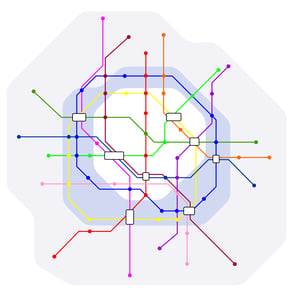Improving Route Optimization: Review and Insights
published on October 04, 2019 by Sonia Mastros
route optimization, bus route optimization
 Maintaining a school bus fleet is one of the single most costly items in a district's budget, but it's one which is absolutely necessary. Schools must run buses and must provide transportation to any families who ask for it. This places a big burden on schools; a burden which is only growing heavier as districts struggle to find enough bus drivers for their routes.
Maintaining a school bus fleet is one of the single most costly items in a district's budget, but it's one which is absolutely necessary. Schools must run buses and must provide transportation to any families who ask for it. This places a big burden on schools; a burden which is only growing heavier as districts struggle to find enough bus drivers for their routes.
Increasingly, schools are turning towards route optimization as a centerpiece of their bus management strategies. With forethought and planning, costs can be reduced. It often becomes possible to eliminate entire routes with better optimization, which alleviates the need for more drivers.
These are some of the strategies and considerations currently utilized.
Four Ways to Strategically Manage Your Bus Route Optimization
1. Get Software Support
Today, having route-planning software isn't a luxury; it's a necessity. These software systems can do in seconds what used to take districts days -or weeks- to do by hand, crunching millions of potential routes to find optimized solutions. Better yet, such software allows you to enter in a wide range of factors to consider in route planning. You can specify the maximum length of routes, or tell the system to avoid certain roads or neighborhoods.
In all likelihood, bus routing software will pay for itself the first time you use it.
2. Look for Opportunities to Reduce Routes
There's probably no better cost-saver than eliminating entire bus routes since that substantially cuts costs as well as reducing the need for drivers. Many schools have looked to this as a way to avoid the bus driver shortage, such as extending the maximum amount of time students are on the bus.
3. Think About the Future
How is your district changing? What neighborhoods are growing, and which are shrinking? Being aware of these civic shifts, and thinking about the long-term trends, can be an excellent aid in planning vehicle purchases and their routes. For example, if you know there's a new subdivision that's filling up quickly, you can assume there will be new transfer students moving there over the course of the year.
4. Stagger Class Start Times
Another option for minimizing routes is to shift school hours into two phases, with one group of students starting roughly one hour before the other. This allows each bus to do two routes, greatly reducing the need for more buses, although it will slightly extend overall school hours.
There's no easy solution to bus route optimization or finding enough drivers to transport all your students.
What methods does your district utilize? Let us know in the comments below!






